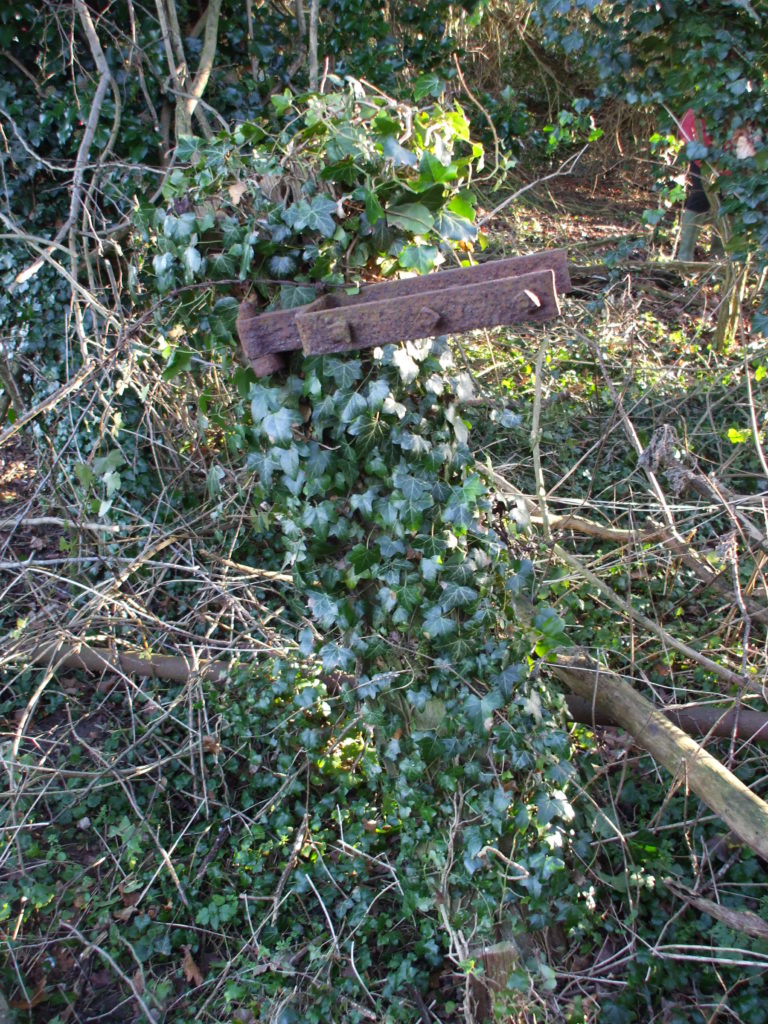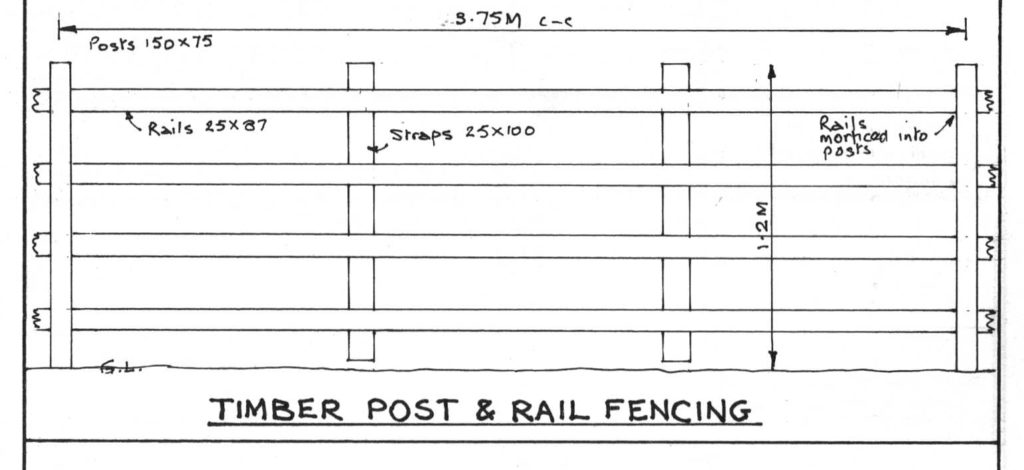
At the point in the Wenhaston trackbed currently cleared by the Wenhaston Environmental Volunteers, there is the remains of a typical SR accommodation crossing.
Amazingly, after such long disuse, the gate on the north side (towards the river pastures) could still be discerned, though it only consists of a couple of rotten posts, and one bottom strake. However, such was the quality of metalwork at the time of building that the hinges are still perfectly usable. After a photo in situ, seen here, these were retrieved and will go to the SRT’s workshop for restoration, followed by re-use. There was just enough left of the gate to measure, so the rebuild (incorporating the original metalwork) can be accurate.
A similar exercise with the remaining posts and rails from the southern boundary fence will allow us to re-create that, as well, exactly where it was built in 1879: some of the timber has survived so well that it can be incorporated.
Historical note: as the posts for the post-and-rail fencing are of the same dimension as the SR’s sleepers (6″ x 3″ x 72″), perhaps the 19th century contractors ordered too many sleepers, and thus decided to use the surplus as fencing. Post and rail is a relatively unusual fencing type: most railways used – and still use – post and wire.

